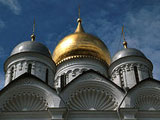CSTO, Divided They Stand
By Sergei Blagov for ISN
The Russia-led Collective Security Treaty Organization (CSTO) has held its first war games to try out the Rapid Reaction Force (KSOR) in Central Asia, as Moscow seeks to boost its regional strategic interests.
On 16 October, Russian President Dmitry Medvedev traveled to Kazakhstan's southern Dzambul region to attend KSOR’s ‘Interaction-2009’ drill. Member states, mainly Russia and Kazakhstan, deployed 7,000 personnel and 300 tanks and armored vehicles.
The CSTO includes Armenia, Belarus, Kazakhstan, Kyrgyzstan, Russia, Tajikistan and Uzbekistan. While other leaders showed up, Belarus leader Alexandar Lukashenko and Uzbek leader Islam Karimov were no-shows.
CSTO officials argue that the alliance's joint force, KSOR, aims to neutralize possible terrorist attacks in Central Asia, notably by Islamic radicals. In June 2009, the CSTO states signed an agreement to form KSOR, but Belarus and Uzbekistan refrained, in what appeared to be a blow to the post-Soviet security alliance.
Uzbekistan insisted that KSOR should be deployed only by a consensus decision, not by a simple majority vote. Tashkent was also said to oppose any use of the KSOR force to settle conflicts between CSTO member states. Karimov seemed to be wary that KSOR could be used as a vehicle of direct Russian interference in the region.
Meanwhile, Uzbekistan's security was repeatedly threatened in the past decade. In May 2005, following violent clashes in Uzbekistan's eastern city of Andijan, President Karimov claimed the riots had been plotted by extremists, notably the Hizb-ut-Tahrir al-Islami (Islamic Party of Liberation). Bombings in Tashkent in February 1999 and an alleged assassination attempt against Karimov were also blamed on Islamic radicals.
Radical Islamic groups in Central Asia, including Hizb, Uighur separatists and the Islamic Movement of Uzbekistan (IMU) are believed by some to be attempting to form the Islamic Movement of Central Asia (IMCA) in order to plot terrorist attacks and move towards the ultimate goal of creating an Islamic state in the Ferghana Valley.
Kyrgyzstan and Tajikistan also used to face direct security threats. The IMU fighters crossed into Kyrgyzstan from neighboring Tajikistan in 1999 and 2000, seeking to enter Uzbekistan from the north through Kyrgyzstan. Subsequently, Uzbek authorities employed landmines in order to protect its border.
Stability in Tajikistan has also been shaky since the end of the country’s civil war back in 1992-1997. The IMU fighters were reported to be operating in northern Tajikistan as recently as this month.
During earlier security crises, when feeling threatened by Islamic radicals, Central Asian states appeared to seek Russian backing. But when those threats appeared to subside, Central Asian leaders began drifting toward the West.
Now, Uzbekistan's hardline President Karimov, the longest serving post-Soviet politician who came to power in 1989, is once again reluctant to rely on the Kremlin's support, even while other Central Asian leaders are not ready to distance themselves from the CSTO.
However, Karimov's possible miscalculation has a potential to destabilize Uzbekistan, Central Asia's most populous nation. As long as the CSTO member states remain divided on a variety of issues, the Russia-led security alliance will continue to struggle to establish itself as a credible and viable force in the region. Meanwhile, disagreements and lack of trust between some CSTO members could create a security vacuum that may be filled by Central Asian extremist groups.

